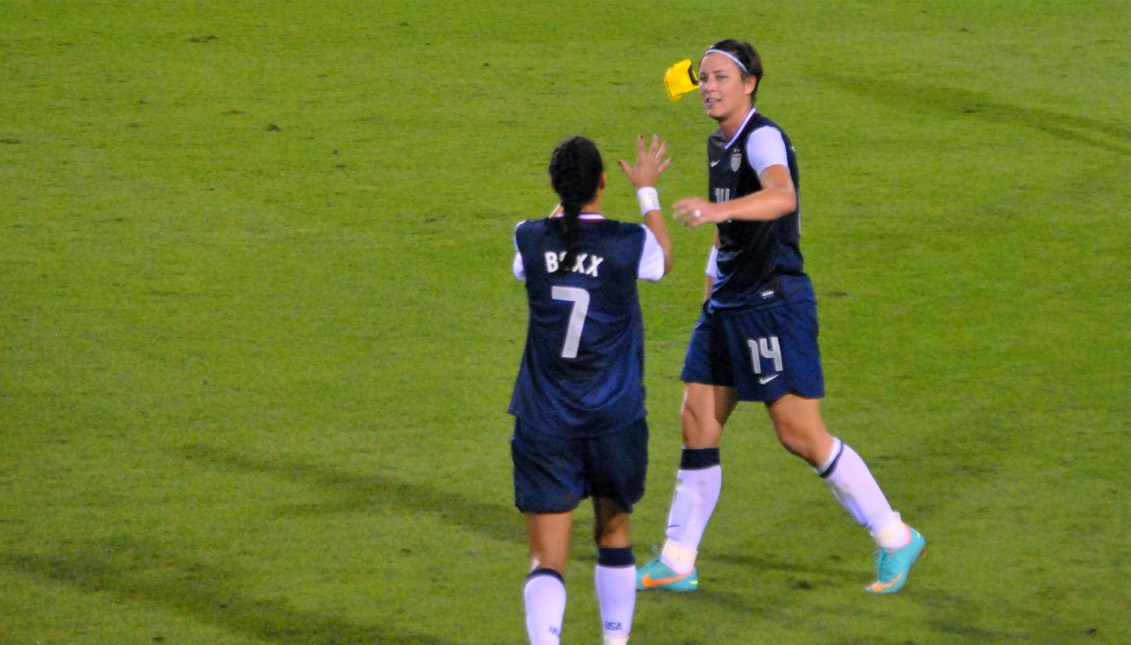
U.S. Women's National team breakdown
Six players, or 26 percent are from California. Four players, or 17 percent, are from New Jersey. Almost half the team is from only two states. I think this is…
A 23-player roster:
Boxx
Press
Morgan
Rapinoe
Egan
Rodriguez
O’Reilly
Rampone
Tobin Heath
Lloyd: Delran
Sauerbrunn
Chapulty
Brian
O’Hara
Laroux
Johnston
Solo
Klingenberg
Wambach
Harris
Holiday
Kreiger
Naeher
Six players, or 26 percent are from California. Four players, or 17 percent, are from New Jersey. Almost half the team is from only two states.
I think this is a little coincidence: California and New Jersey have always had strong youth soccer programs, both girls and boys, where greats like Heather O’Reilly (my favorite player and role model, Go HAO!) get their starts.
If you just look at the “One Nation. One Team. 23 Stories” curated by US Soccer, it’s clear practically all had their starts on youth teams.
Having the opportunity to play at a young age can clearly reap its rewards after years of honing that skill.
Yet, there are some other things we notice about the demographics of the team:
Practically all the players are white: one is Latina, (Amy Rodriguez) and two are biracial (Sydney Laroux and Shannon Boxx).
Why is this?
Perhaps there is some correlation between being a young, white, mostly middle-class, girl in the U.S. and the likelihood to join the youth leagues that breed soccer stars.
Yet, even a middle class livelihood may not be competitive enough at times. Travel teams can charge thousands for winning seasons and college showcases. Couple that with the United State’s extensive recruitment network, including the notorious Olympic Development Program, and well ... you’ve got yourself a team that’s set to win a World Cup.
But what about those countries that aren’t as prepared? What barriers exist for girls who play soccer outside the US, (and Europe, for that matter)?
These barriers generally don’t apply to American or European women and girls, particularly since the eight European teams that are participating in this World Cup are some the favorites, and the more skilled teams. Eight out of 24 teams in this World Cup are European — that’s a third of the tournament. This leaves four English-speaking nations, four Asian nations, three African nations, and five Latin American nations.
Without further ado, here are some barriers that keep girls and women from playing (more) soccer in Latin America:
Economics. While soccer can be played on the streets, it does take significant financial investment to take the game beyond street play. Grass, goals, and space are expensive. The more access that young boys and girls have to places where they can play soccer, the better, not to mention the fact that developing elite leagues is another expense.
Gender roles and social structures. Research has been done in poor areas of Latin America surrounding the reasons why girls don’t participate in soccer as much as boys do, one such example being Cuenca, Ecuador. There, as in other places in Latin America, it is considered dangerous and somewhat inappropriate for girls to play sports outside. Meanwhile, boys spend their afternoons after school playing soccer in the streets. They hone their skills and love for the game, while girls develop no such attachments.
What kind of solutions exist for these situations?
While there are a number of solutions that can be posed for these barriers, from linking girls to soccer mentors to nonprofits who build fields, the real solution is how Latin American girls, and girls worldwide, see themselves in the context of soccer and their ability to involve themselves. Really, the best way to do that is by believing they too can play the beautiful game. The more countries involved in the Women’s World Cup, the more opportunities girls have to see that’s a reality, and the more likely it is to become a reality for them.










LEAVE A COMMENT:
Join the discussion! Leave a comment.